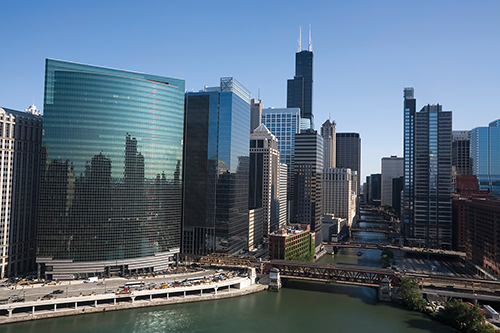Employers challenging OSHA citations must follow new procedures
Employers fighting Occupational Safety and Health Administration citations will have to follow new procedures beginning June 10.
On April 9, the Occupational Safety and Health Review Commission announced updated rules of procedures, changing requirements that had not been significantly revised since 2005. The commission hears challenges to OSHA inspection citations and fines.
One significant change is a new requirement for attorneys to electronically file documents using the commission's e-filing system; businesses representing themselves still can file paper documents. Confidential and privileged documents cannot be filed electronically because privacy is not guaranteed.
Other changes include:
In September 2018, the commission asked attorneys and others for comments regarding changes to the rules of procedures; the new rules were unanimously approved by the three-member commission March 28.
California employers can be sued for business code violations
Employers are concerned about costly penalties following a California Supreme Court ruling that allows companies to be sued under state unfair business practice law when workers are injured on the job, according to Bloomberg Law.
The ruling gives prosecutors the ability to seek millions in punitive fines, and one California roofing company is experiencing the effects as prosecutors are asking for $1.5 million in penalties for a worker injured on the job; the company was cited by the Division of Occupational Safety and Health of California about three years ago.
Jeffrey Tanenbaum, a chair of Nixon Peabody's occupational safety and health practice in San Francisco, says California prosecutors are "encouraged" to apply the new law's interpretation and says he has seen about seven new, similar state cases since the ruling in 2018.
The unanimous opinion that led to the California Supreme Court ruling was that federal worker safety law doesn't take precedent over prosecutors' claims against employers. The ruling also reportedly cleared the way for false advertising claims based on company statements regarding commitment to workplace safety.
Joshua Henderson, a partner at Seyfarth Shaw LLP, San Francisco, tells his clients to include statements about being committed to health and safety in workplace safety language so they can be "well-positioned to challenge a false advertising claim."
Chicago modernizes its building code requirements

|
On April 10, the Chicago City Council voted to adopt a major update to the Chicago Building Code to better align the city's construction requirements with up-to-date model codes and national standards. Chicago is among the first major jurisdictions in the U.S. to adopt the International Building Code,® 2018 Edition.
The revisions are Chicago's first comprehensive building code overhaul since 1949 and are meant to lead to more affordable construction in the city by expanding options to design and build with a wider range of materials and technologies. The updated code also will require sprinkler systems in most new construction projects; enable more cost-effective construction of single-family homes by adopting risk-based structural design requirements; create greater opportunities for the conversion of existing basements and attics into livable space; encourage preservation of Chicago's historic buildings; and promote energy efficiency and sustainability.
The code modernization ordinance is based on the most recent editions of the IBC for new construction and the International Existing Building Code,® 2018 Edition for the rehabilitation of existing buildings. Significantly, the code revisions include adopting the common terminology and format used in other major U.S. jurisdictions, which will make it easier for architects, designers and builders to understand Chicago's requirements. In addition, the code will be easier to keep updated as national standards are changed.
The revisions currently are being phased in and will completely replace the current building code by Aug. 1, 2020. During the implementation period, the Chicago Department of Buildings is working with a variety of stakeholders to ensure a smooth transition.
COMMENTS
Be the first to comment. Please log in to leave a comment.